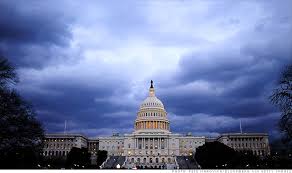
Shutdowns – Not What They’re Cracked Up To Be
October 6, 2013 7:00 amAs previewed in our post from last weekend, the looming deadline to raise the debt ceiling came and went at midnight on October 1st and our federal government began the 18th shutdown in our nation’s history. As we stated previously, this partial shutdown is not a huge deal at this juncture, but the debt ceiling deadline later this month has the potential to be.
Our opinion on what happens next echoes that of David Stockman (the budget director under the Reagan administration). Of the 17 prior shutdowns our nation has been through (dating back to 1976), Stockman has been personally involved in 11 of them, so you could say “he’s been there, done that.”
Here’s what he had to say in a recent interview:
“Shutdowns are not what they’re cracked up to be. Essentially, government shutdowns are very partial because we define something called ‘essential’ government services, and as it turns out, most of the federal government is essential (according to the guidelines). So the shutdown is not the real story… it’s a side show before we get to the debt ceiling. If we run out of debt ceiling (later this month), the President does have the power to prioritize the inflow of revenue (which is still a massive $250B/mo coming in) that has to be allocated.
The first thing they’ll do is spend $30B paying interest on the debt. It is a complete red herring to say there is going to be a default. There will never be a time in which there’s not enough cash to pay the interest… To be clear: If we reach the debt ceiling limit, there is no agreement, we don’t have the money to pay our bills, there will not be a technical default… the US will not default on its debt.”
We feel Stockman makes a very good point that is often overlooked: Why would we make the catastrophic mistake of technically defaulting on our debt when we don’t have to? The President can keep the political pressure on the Congress as long as he likes, but in the end, he will not allow any defaults.
Sadly, this whole political circus act is showing the rest of the world that we don’t have the ability to work together to solve our country’s long-term structural problems. This is not what the rest of the world wants to see coming from the issuer of the world’s reserve currency. This dilemma was highlighted this past week as the US dollar weakened against other major currencies and rates on short-term (30 day) government debt went skyrocketing.
So as we enter week two of this current partial government shutdown, please try not to get distracted by the political bantering and stay focused on the facts. We’ll do our best to help you stay tuned to the issues that truly affect the markets and your investments.
Tags: Federal Debt Ceiling, Shutdown, StockmanCategorized in: Blog
This post was written by Conscient Capital





